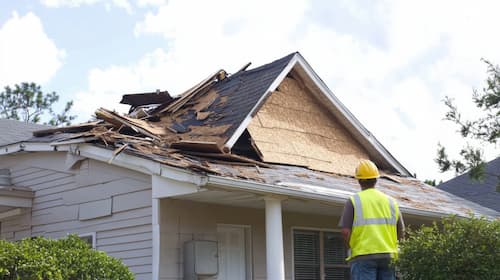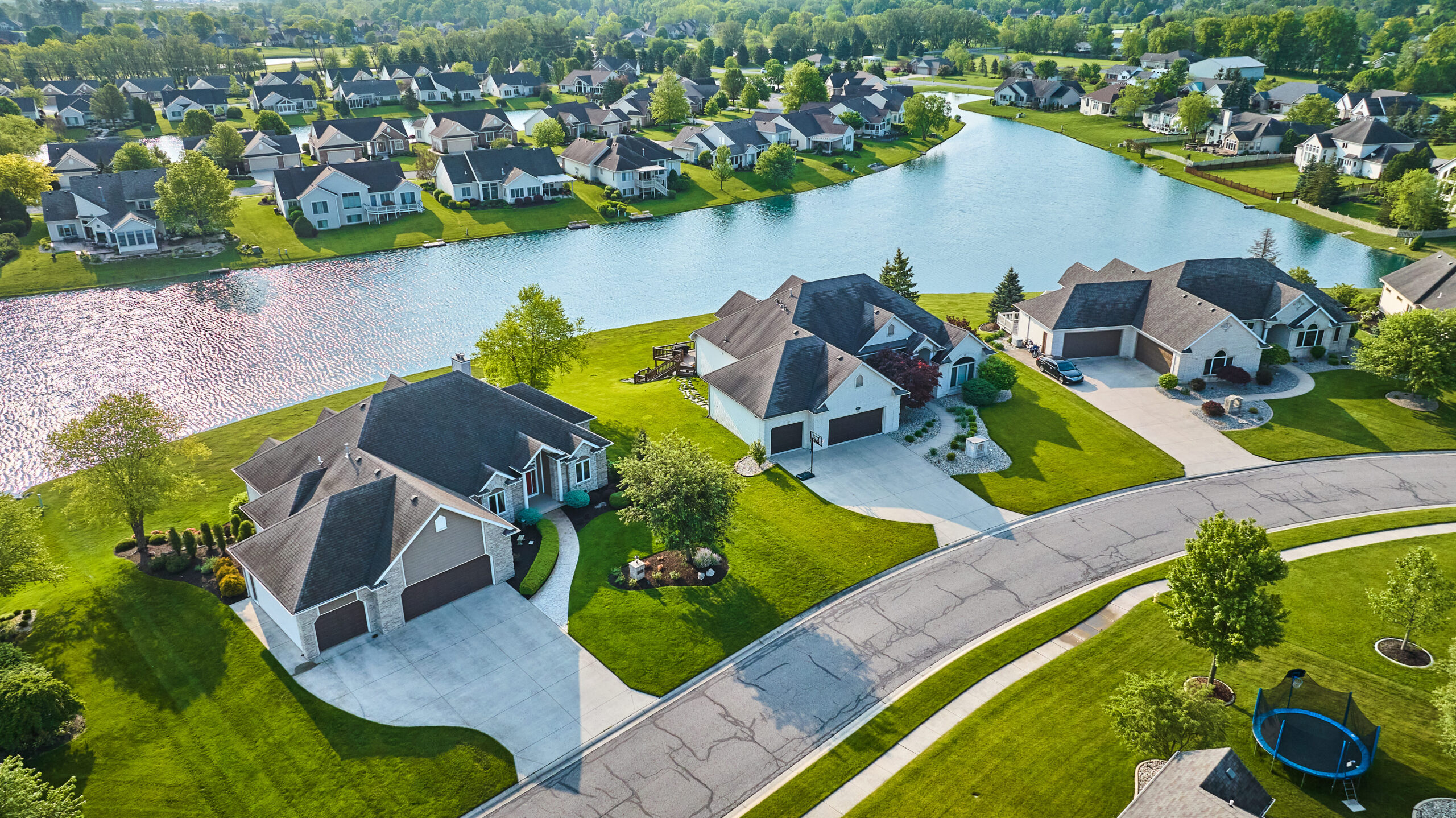Why you can trust Insure.com

Quality Verified
At Insure.com, we are committed to providing the timely, accurate and expert information consumers need to make smart insurance decisions. All our content is written and reviewed by industry professionals and insurance experts. Our team carefully vets our rate data to ensure we only provide reliable and up-to-date insurance pricing. We follow the highest editorial standards. Our content is based solely on objective research and data gathering. We maintain strict editorial independence to ensure unbiased coverage of the insurance industry.
Most standard homeowners insurance policies include coverage for damage caused by tornadoes.
A typical homeowners insurance policy covers tornado damage such as wind damage to your roof or fallen trees. However, in some areas, tornadoes fall under the classification of windstorms, which can require separate coverage or have a separate deductible, so it’s important to read your policy carefully.
Generally, home insurance covers tornado damage to your house, other structures on your property and your personal property. It will also help pay for a place to live if a tornado forces you out of your home while repairs are done.
Key Takeaways
- A standard homeowners insurance policy covers tornado damage, although in some areas you may need an endorsement or separate policy for windstorms.
- Homeowners insurance covers tornado damage to your house, other structures and to personal property.
- After a tornado, document the damage with photos and contact your insurance company right away.
How does homeowners insurance cover tornado damage?
Homeowners insurance covers tornado damage through several different parts of your policy. Here’s a list of the coverages that might come into play.
- Dwelling coverage. This covers your home’s structure. For example, if your roof is damaged, the dwelling coverage in your policy will replace it.
- Other structures coverage. This covers detached structures that are damaged by a tornado, such as a garage or a gazebo.
- Personal property coverage. This covers your personal belongings; that’s everything in them home as well as property kept outside, like patio furniture.
- Loss of use coverage. This covers temporary living expenses, such as a hotel stay if your home was too severely damaged by a tornado to live in during repairs.
Keep in mind many of these coverages have limits on how much they will pay out. You will have to pay a deductible as well; that may be your standard deductible, or you may have a special windstorm deductible.
In some areas, you will need a separate windstorm endorsement or even a standalone policy for windstorm damage.
What to do after a tornado
After a tornado, follow these steps.
- Make sure you and your home are safe: First things first, take care of yourself and don’t enter your home until you are told it is safe to do so. You can further protect your home by turning off the electricity and water.
- Take temporary steps to prevent further damage. Put tarps on broken windows and cover any holes in the roof or walls if you can safely do so.
- Take photos of the damage. Photograph the damage in detail to record everything for the insurance company.
- Call your insurance company: You’ll want to take this step as soon as possible so that an insurance adjuster can assess the damage.
- Take inventory of missing or damaged items: Make a list of personal property that is damaged and note its approximate value.
How to file a tornado damage claim
To make a tornado damage claim, you’ll first need to call your homeowners insurance company and report the damage. They’ll direct you as to how to file a claim and will dispatch an insurance adjuster to evaluate the damage.
Make sure to take pictures of all the damage and to save any receipts, especially if you are forced to relocate. Your homeowners insurance company will need the receipts in order to reimburse you for the costs.
Here’s how to file a tornado damage claim, step by step:
- Contact your insurer immediately to discuss your coverage.
- Fill out and return the claim forms sent to you by your insurer as soon as possible. You only have a limited amount of time to file a claim.
- Arrange for an insurance adjuster to visit the property and assess the damage. You will likely coordinate this with your insurer.
- After the insurance adjuster has evaluated the damage, begin to make repairs.
- Save any documentation for the insurer so you can be reimbursed, such as receipts for accommodation, construction and repair costs and any other necessary expenses.
QuickTake
Expert Q&A on natural disasters
Q. Based on your research, what strategies does the government use to protect the economy from the potential impact of natural disasters?
A. “Most of the government’s strategies are ex post and are in the form of disaster relief after an adverse event occurs,” Barbier explains. “The government leaves it mainly to homeowners, businesses, and local and state government agencies to implement any strategies for preventing economic damages from natural disasters.”
Q. Are government strategies sufficient? If not, what more can be done?
A. “The government should consider developing a national strategy for assessing the vulnerability of coastlines, people and economic activity to natural disasters, especially given the likelihood of more frequent and intense storms due to climate change and sea level rise,” Barbier suggests. “As part of the national strategy, the government should consider the important role of both grey infrastructure (built structures, such as dykes, levies, and [beach] groins) and green infrastructure (coastal habitat that have proven to mitigate flooding, such as marsh, mangroves, seagrass beds, dunes, and barrier islands).”
Given that natural disaster mitigation approaches vary among localities, and that homeowners can face significant challenges recovering from flooding, tornadoes, blizzards and other disasters, it is important to establish insurance coverage addressing risks most relevant to a particular location.
Tornadoes and home insurance: The bottom line
Tornadoes affect thousands of people — and their homes — a year. Sometimes, tornadoes cause destruction so severe that homeowners need to completely rebuild their houses. The best way to protect your home and your finances if a tornado strikes is by buying a homeowners insurance policy that covers tornado damage. Make sure to read the fine print of your policy before you sign to ensure you’re getting the right coverage.
Frequently asked questions
What happens if your house gets destroyed by a tornado?
If your house is destroyed by a tornado, homeowners insurance will cover the costs to rebuild it, but you’ll need to file a claim first. Be sure to take pictures of the damage and call your homeowners insurance company to file a claim.
Does home insurance cover water damage from a tornado?
Although tornadoes are often accompanied by rain, damage caused by the rain isn’t necessarily covered by your homeowners insurance policy. Specifically, if your home is flooded, your homeowners insurance policy won’t reimburse you for the damage.
Flooding isn’t covered by homeowners insurance. If you live somewhere with a risk of flooding, you should buy a separate flood insurance policy.
What should you do if a tornado hits your house?
You should not enter your home unless you are told it is safe to do so. After you are safe, call your homeowners insurance company so they can dispatch an insurance adjuster to assess the damage.









Edward Barbier
University Distinguished Professor in the Department of Economics and a Senior Scholar in the School of Global Environmental Sustainability at Colorado State University.